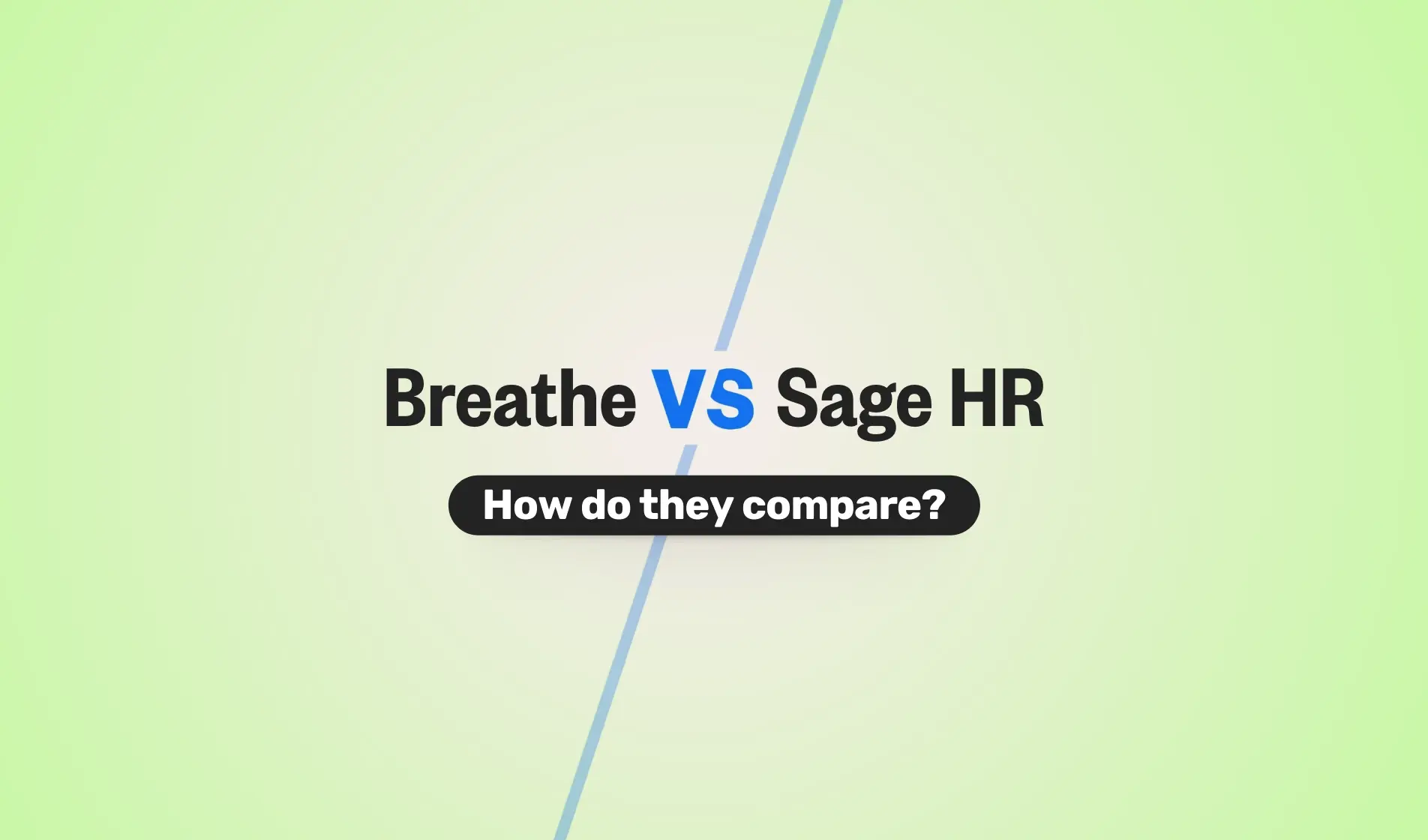Pleo marketplace partner blog, from Pleo's Chief People Officer, Martin Cerullo.
Smart spend management is key for SMEs. By collaborating with HR, finance teams can avoid financial pitfalls and empower employees while strengthening the bottom line.

In today’s economic climate, running a small or medium-sized business isn’t just about survival - it’s about smart spending. Despite best intentions, spend management is still one of the biggest causes of stress and inefficiency in SMEs.
Whether it’s missed budgets, employee expenses, or invoice bottlenecks, financial missteps cost time, trust, and talent.
But here’s the good news: spend management isn’t just the finance department’s job anymore. In the most forward-thinking SMEs, HR and finance are joining forces to protect employees and the bottom line, especially when cost-of-living pressures are high and every penny counts.
By collaborating with HR, finance teams can avoid financial pitfalls and empower employees while strengthening the bottom line through better access to capital and funding mechanisms.
Let’s explore how spend management is evolving, and how your SME can avoid common financial pitfalls.
Introduction to spend management
Spend management is a critical practice for organisations to ensure they make procurement and sourcing decisions that benefit both the bottom line and company efficiency.
It involves maximising value from company spend while decreasing costs, and is primarily related to procurement, encompassing spend analysis, strategic sourcing, and supplier relationship management.
Chief Financial Officers (CFOs) and Chief Procurement Officers (CPOs) play a key role in spend management, which is focused on cost optimisation and value creation. Effective spend management is essential for organisations to improve their financial management, reduce costs, and mitigate financial risks.
What are SMEs really spending on?
From software subscriptions to team travel, the average SME spends money across multiple channels. Here’s how it typically breaks down:
- 26% of SME budgets go to payroll and employee-related expenses
- 19% is spent on operational costs like office space, tech tools, and utilities
- 15% goes toward marketing and new customer acquisition
- 11% is swallowed by travel, entertainment, and employee expenses
Many SMEs rely on internal funds for their operations, especially in emerging markets where formal bank loans are often seen as too expensive or difficult to obtain.
These numbers vary by industry, but one trend is clear: people-related costs are at the heart of SME spending. This means HR plays a bigger role than ever in managing budgets, not just setting headcount, but empowering employees to spend responsibly in ways that align with company culture.
.webp?width=734&height=489&name=00_Wallet%20desktop%20view%20EN%20EUR%20(compressed).webp)
Understanding spend management
Spend data is a crucial component of spend management, providing valuable insights into an organisation’s spending habits and identifying areas for cost reduction and process improvement.
It involves collecting, cleansing, classifying, and analysing expenditure data to provide a comprehensive view of an organisation’s spending patterns. Spend data can be used to identify opportunities for cost savings, improve supplier relationships, and ensure compliance with internal policies and external regulations.
Organisations can use spend data to make informed procurement decisions, negotiate better prices with suppliers, and optimise their supply chain.
The top 3 financial consequences of unoptimised spending
1. Cash flow chaos
Even profitable businesses fail if they can’t manage day-to-day cash flow. Unexpected spend or delayed expense reimbursements, or accumulating debt can throw off forecasts and create strain.
2. Employee disempowerment
When employees have to front costs or chase late reimbursements, it affects morale and productivity. In a cost-of-living crisis, no employee should be left out of pocket. Financial stress can bleed into performance, engagement, and retention.
3. Compliance and audit risk
Disorganised spending can lead to missed receipts, undocumented transactions, or misreported VAT, leading to fines, poor audit outcomes, or even legal trouble.
Having a structured approach to spend management, and leveraging the right tools, can prevent these costly mistakes. Plus, a messy internal spending process can impact your reputation with investors, partners, and future hires.
The fallout of poor spend management
You don’t have to look far for examples of mismanaged SME finance:
- Startups with bloated expense accounts
- Teams maxing out company cards without approval flows
- Companies forced to cut back on essential spending, training, wellbeing, and recruitment, because they didn’t forecast properly
Integrating contracts within the spend management process is crucial to ensure suppliers are paid correctly and to maintain compliance with legal requirements. Centralising contracts also provides better visibility and negotiation capabilities.
An illustrative example of a company that faced layoffs due to rapid expansion is Zenefits, a human resources software startup. Founded in 2013, Zenefits experienced swift growth, achieving a valuation of $4.5 billion by 2015.
This rapid expansion led to operational challenges, including compliance issues and internal inefficiencies. Amid regulatory scrutiny and leadership changes, Zenefits laid off approximately 250 employees, and about 17% of its workforce.
This case underscores the potential pitfalls of scaling too quickly without robust compliance and operational frameworks in place.
Benefits of effective spend management
Effective spend management can bring numerous benefits to organisations, including cost reduction, improved supplier relationships, and enhanced financial management.
It can help organisations identify areas for cost savings, improve their procurement processes, and ensure compliance with internal policies and external regulations. Spend management can also help organisations mitigate financial risks, improve their cash flow, and increase their competitiveness in the market.
Additionally, effective spend management can support sustainable growth, improve employment opportunities, and contribute to the overall development of the economy.
The tech that's transforming SME spend
The solution isn’t micro-management - it’s smart management.
Technology has transformed how SMEs handle spend. Fintech tools like Pleo offer real-time spend visibility, departmental budgets, and policy-based approval workflows.
These features help finance teams forecast more accurately and employees stay within predefined spending limits. Most importantly, tools like Pleo empower HR and finance to create a seamless and compliant financial environment.
Data collection is crucial in spend analysis and decision-making, as comprehensive data gathering ensures accurate analysis and better decision-making.

At Pleo, we’ve seen firsthand how automating spending control can transform a business:
- Spend analysis tools help businesses understand where money is going so they can course-correct
- Pre-approved cards mean employees never need to dip into their own pocket (no more reimbursing taxis three weeks later)
- Real-time tracking helps finance teams forecast more accurately, plan proactively, and avoid overspending
The result? Less friction, more clarity and fewer finance fires to put out.
Why HR and finance need to talk more
Spend management isn’t just about balancing the books, it’s about people. HR and finance need to work closely together to ensure both financial health and employee satisfaction.
HR teams can play a crucial role in creating inclusive policies, ensuring employees understand what’s expected when it comes to spending, and empowering them with the tools and resources to make the right decisions
When employees feel financially supported, they’re more engaged, more loyal, and less likely to churn. HR can champion smart spend practices that reinforce values of fairness, transparency, and care.
Monitoring compliance is essential in ensuring that procurement processes align with organisational standards and legal requirements, which helps in understanding expenditure, minimising costs, and optimising supplier relationships.
And finance? It can support HR by making sure spending tools are aligned with real-life employee needs. From onboarding to offboarding, managing money should be seamless - not stressful.
Bringing HR and finance together helps SMEs:
- Build more inclusive policies around expenses and benefits
- Avoid reimbursement bottlenecks that frustrate staff
- Plan compensation and perks with financial foresight
- Create a culture of accountability, not control
"Look closely at where SME money goes - it’s often invested in our people. That’s why HR’s voice in spend management isn’t just valuable, it’s vital.
By integrating HR insights into financial strategy, finance and HR together can drive smarter investments. This alignment doesn’t just support responsible spending, it fuels growth, empowers teams, and strengthens the bottom line."
Charlie O'Brien, Head of People, Breathe
Measuring the ROI of healthy spend management
How do you know if your spend management strategy is working? Here are a few key performance indicators (KPIs) and metrics SMEs can track:
- Expense processing time (from purchase to reconciliation)
- Average reimbursement delay
- % of spend under policy
- Budget vs. actual variance per department
- Employee satisfaction with expense processes
- Cost per hire or cost per training session
By consistently tracking these metrics, SMEs can pinpoint where their spend strategy is strong and where it needs improvement. Healthy spend management doesn’t mean cutting back on expenses, it’s about spending smarter, on the right things, at the right time, and in the right way.
Empowered employees = strengthened finance
Spend management might start in the finance team but it lives in the culture of your whole organisation.
In a time where both costs and expectations are rising, SMEs can’t afford to be reactive. It’s time for HR and finance leaders to work in sync, empower employees with the right tools, and build a more resilient business. Supporting employees in achieving financial and operational goals is crucial for overall success.
Whether you’re advising clients as a Breathe HR software Partner, using Breathe within your business, or leading an HR team inside an SME, the message is clear: put employees first, and the numbers will follow.
At Pleo, we help companies of all sizes streamline their spend management, giving both HR and finance the tools they need to succeed. Ready to take control of your company’s spending? Empower your team, improve visibility, and make HR and Finance your most powerful partnership.
.webp)
Author: Martin Cerullo
Martin, Chief People Officer at Pleo and has a wealth of experience in investor backed scale ups. Previously HR leader at Oda, IKEA and other consumer brands, he is an active advocate for the empowerment of women in the workplace, working with organisations such as The Women's Foundation.




